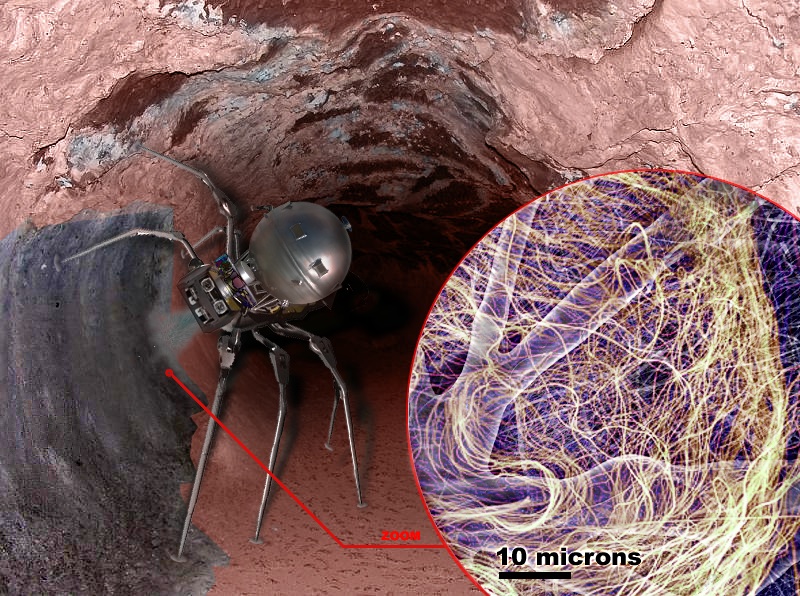OEKO-TEX “zero discharge” program
January 31st, 2017
OEKO-TEX announces that it has has joined the Zero Discharge of Hazardous Chemicals (ZDHC) Programme. OEKO-TEX supports the programme’s vision of “widespread implementation of sustainable chemistry and best practices in the textile and footwear industries to protect consumers, workers and the environment.” The ZDHC Programme consists of brands and other contributors that believe industry-wide change in transparency, […]
J. Ennis Fabrics hires Byron Yonce
January 30th, 2017
Ennis Fabrics, Plainfield, Ind., has announced that Byron Yonce has joined its sales team. Yonce has more than 25 years of industry experience, especially with specialty fabrics. He has served on various boards of directors: as president of the Midwest Fabric Products Association; chairman of the Fabric Graphics division of IFAI; and chairman of the […]
Antibiotic synthetic spider silk using E. coli developed
January 27th, 2017
Interdisciplinary work has resulted in a functionalized, artificial, antibiotic spider silk using E. coli bacteria. Scientists at Nottingham University in the U.K. have utilized a concept called “click chemistry” to synthesize the spider silk. Prof. Neil Thomas of the School of Chemistry collaborated with life scientist Dr. Sara Goodacre and her team in the research. […]
The Dyneema Project showcases new alpine jacket
January 26th, 2017
Technical apparel designer Conroy Nachtigall was commissioned by The Dyneema Project to develop an alpine jacket using Dyneema® composite fabric. The short documentary “Sending It” includes responses from athletes testing the jacket in Squamish, B.C., Canada. Nachtigall noted that the Dyneema material suited his design goal of shifting perceptions. The material is high-tech, but its […]
Report out on industrial protective clothing fabrics
January 25th, 2017
A recent report on industrial protective clothing fabrics market forecasts new growth in China, India and Brazil, which are likely to make up a much larger portion of the industrial protective clothing manufacturing segment during the next decade. The report says that Europe currently leads in production of and demand for industrial protective clothing fabrics. ReportLinker […]
Nature mimicked in new graphene material
January 20th, 2017
Graphene is thought to be the strongest 2-D material on earth. Recently a research team at MIT used heat and pressure to compress flakes of graphene to create a new 3-D material. The new material has 5 percent the density of steel but 10 times the strength. The process produced a form similar to corals […]
Mitsubishi Rayon buys U.S. carbon fiber plant
January 20th, 2017
Mitsubishi Rayon Co. Ltd. has acquired the SGL Carbon Fibers site in Evanston, Wyo. Composites World reports that the addition of this site will expand Mitsubishi Rayon’s North American business to meet the growing demand for composites in wind turbine blades and automotive applications. SGL Group upgraded production lines in Muir of Ord, Scotland, which […]
Winners of warfighter suit design challenge announced
January 20th, 2017
The Joint Program Executive Office for Chemical and Biological Defense (JPEO-CBD) has awarded 12 prizes to winners of the Proof Challenge, a chembio suit design contest that called on the public to submit designs and ideas for a new suit for warfighters. Finalists came from a variety of fields and ranged from students to engineers. […]
Committee to address standards for smart and e-textiles
January 20th, 2017
IPC, a trade organization representing the electronics industry, will host a meeting during IPC APEX EXPO in San Diego, Calif., to form a general committee to begin work on standards for conductive fabrics, e-textiles and stretchable electronics. The meeting is scheduled for Thursday afternoon, February 16, at the San Diego Convention Center. IPC members Dan […]
Stronger possibilities
January 20th, 2017
Carbon nanofibers and graphene can play a role in constructing Space habitats using robotics. The use of robotically-assisted additive manufacturing involving a mixture of carbon nanofibers, graphene and other polymer nanocomposites will allow the construction of lightweight and impervious sealant barriers, ultra-strong supports, airlocks and even bulkheads for future Space habitats and colonies within dormant […]
 TEXTILES.ORG
TEXTILES.ORG



